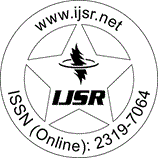Downloads: 2
India | Cardiology Science | Volume 14 Issue 10, October 2025 | Pages: 461 - 465
Association of High-Sensitivity C-Reactive Protein with Cardiovascular Risk Factors, Clinical Features, and Angiographic Findings in Young Adults with Acute Coronary Syndrome: An Analytical Cross-Sectional Study
Abstract: Background: Acute coronary syndrome (ACS) among young adults (?45 years) is an emerging public health concern, with premature events leading to significant morbidity, mortality, and socioeconomic burden. Inflammation is central to atherosclerosis and plaque instability, with high-sensitivity C-reactive protein (hs-CRP) serving as a reliable biomarker of cardiovascular risk. However, its role in relation to angiographic profile and risk factors in younger ACS patients remains underexplored. Methods: This hospital-based analytical cross-sectional study enrolled 239 consecutive ACS patients aged <45 years at a tertiary care centre in Central India (September 2024?August 2025). Clinical, socio-demographic, and cardiovascular risk factors were recorded. hs-CRP levels were measured using latex turbidimetry and classified as <1 mg/l, 1?3 mg/l, and >3 mg/l. Coronary angiography was performed in eligible patients and categorized as single-vessel disease (SVD), double-vessel disease (DVD), or triple-vessel disease (TVD). Associations between hs-CRP, clinical presentation, and angiographic severity were analysed. Results: Elevated hs-CRP (>3 mg/l) was observed in 56.9% of patients and showed significant associations with smoking, metabolic syndrome, central obesity, periodontitis, dyslipidaemia, and premature coronary artery disease (p<0.05). In contrast, hypertension and diabetes mellitus were not significantly correlated. Patients with STEMI had higher hs-CRP levels compared to those with UA/NSTEMI (p<0.01). Angiographic analysis revealed progressively higher hs-CRP levels in DVD and TVD compared to SVD (p<0.001). Conclusion: hs-CRP is strongly associated with cardiovascular risk factors, STEMI presentation, and angiographic severity in young ACS patients. Routine hs-CRP assessment may enhance early risk stratification and inform targeted therapeutic strategies.
Keywords: Acute coronary syndrome, young adults, high-sensitivity C-reactive protein, cardiovascular risk factors, coronary angiography, inflammation
How to Cite?: Dr. Dheeraj Karde, Dr. Sunil Washimkar, Dr. Atulsingh Rajput, Dr. Sharada Bholay, "Association of High-Sensitivity C-Reactive Protein with Cardiovascular Risk Factors, Clinical Features, and Angiographic Findings in Young Adults with Acute Coronary Syndrome: An Analytical Cross-Sectional Study", Volume 14 Issue 10, October 2025, International Journal of Science and Research (IJSR), Pages: 461-465, https://www.ijsr.net/getabstract.php?paperid=SR251001054612, DOI: https://dx.doi.org/10.21275/SR251001054612
